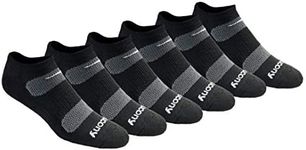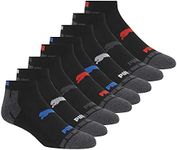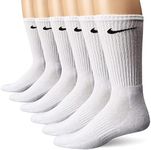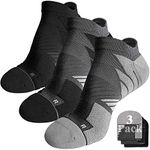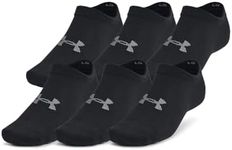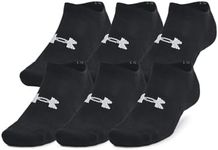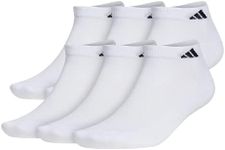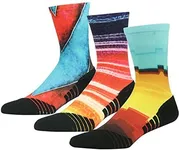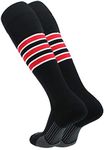Buying Guide for the Best Running Socks For Men
Choosing the right running socks is crucial for comfort, performance, and preventing injuries. The right pair of socks can make a significant difference in your running experience by providing the necessary support, cushioning, and moisture management. Here are some key specifications to consider when selecting running socks for men, along with explanations to help you make an informed decision.MaterialThe material of running socks is important because it affects breathability, moisture-wicking, and comfort. Common materials include synthetic blends, merino wool, and cotton. Synthetic blends like polyester and nylon are excellent for moisture-wicking and durability, making them ideal for long runs and hot weather. Merino wool is great for temperature regulation and odor resistance, suitable for both warm and cold conditions. Avoid cotton as it retains moisture and can lead to blisters. Choose a material based on your running conditions and personal comfort preferences.
CushioningCushioning in running socks provides impact protection and comfort. Socks can range from no cushioning (ultra-light) to maximum cushioning. Ultra-light socks are best for racing and short runs where you want minimal bulk. Light cushioning offers a balance of comfort and performance for everyday training. Medium to maximum cushioning is ideal for long-distance running or if you need extra support and shock absorption. Consider your running distance, terrain, and personal comfort needs when selecting the level of cushioning.
Fit and CompressionA good fit ensures that the socks stay in place and prevent blisters. Compression socks offer additional benefits like improved blood circulation and reduced muscle fatigue. Look for socks with a snug fit that conforms to the shape of your foot without being too tight. Compression socks are particularly useful for long runs and recovery, as they provide graduated pressure to support your muscles. Choose a fit that feels comfortable and secure, and consider compression if you need extra support and recovery benefits.
HeightThe height of running socks can affect comfort and protection. Common heights include no-show, ankle, crew, and knee-high. No-show and ankle socks are great for a minimalist feel and are suitable for warm weather. Crew socks provide more coverage and protection against debris, making them ideal for trail running. Knee-high socks offer maximum coverage and are often used for compression benefits. Select the height based on your running environment, weather conditions, and personal preference for coverage.
Seam ConstructionSeam construction is important to prevent chafing and blisters. Look for socks with seamless or flatlock seams, especially in the toe area, to minimize friction. Seamless socks are ideal for runners who are prone to blisters or have sensitive skin. Flatlock seams provide a smooth finish and reduce the risk of irritation. Pay attention to the seam construction to ensure maximum comfort during your runs.
